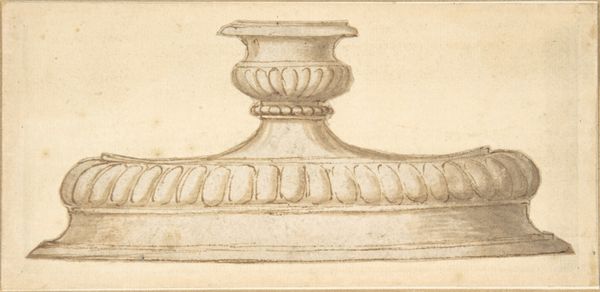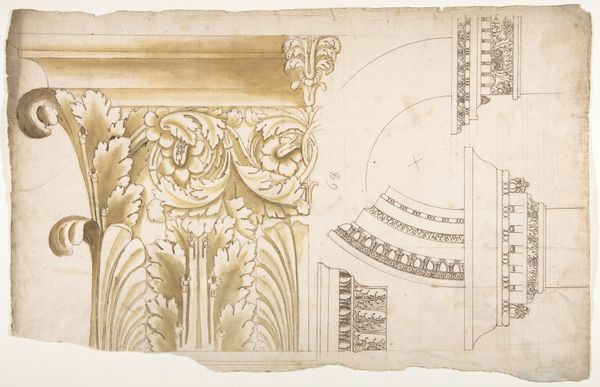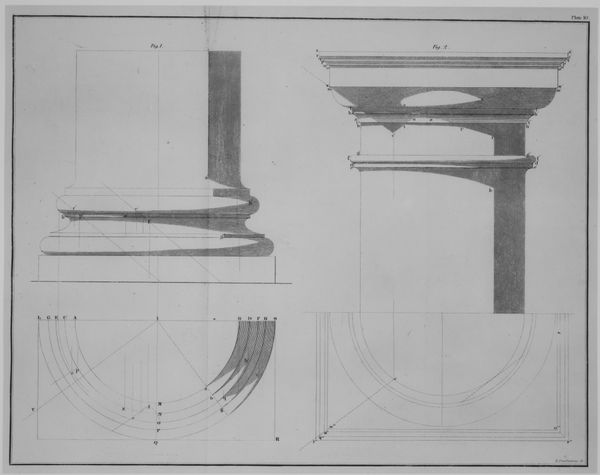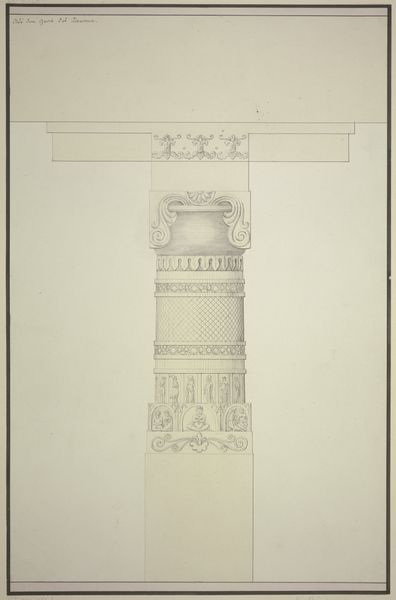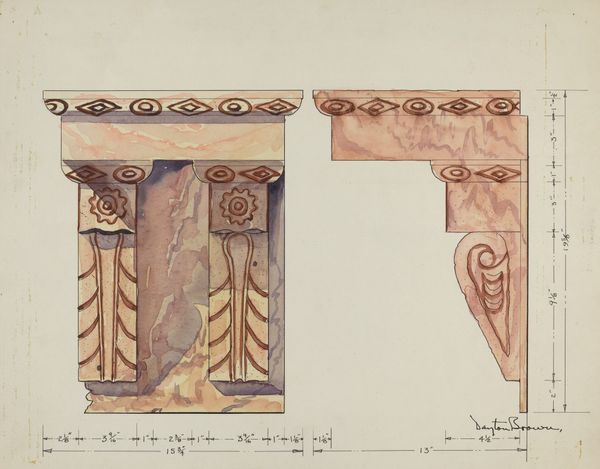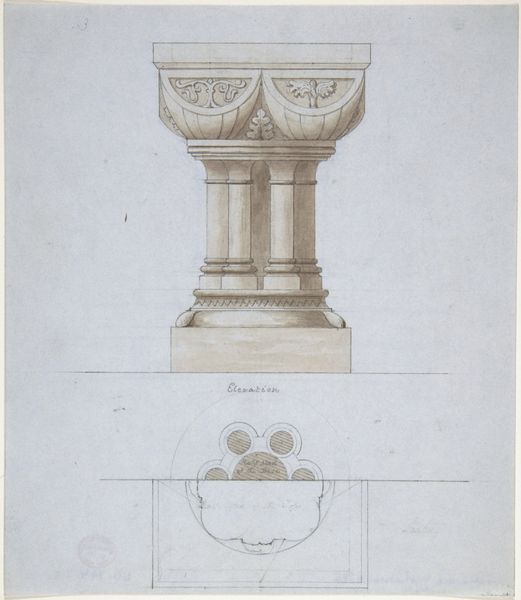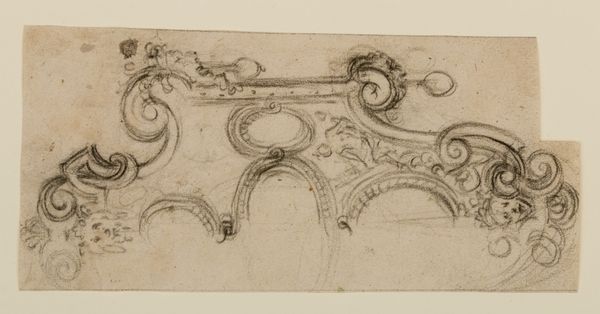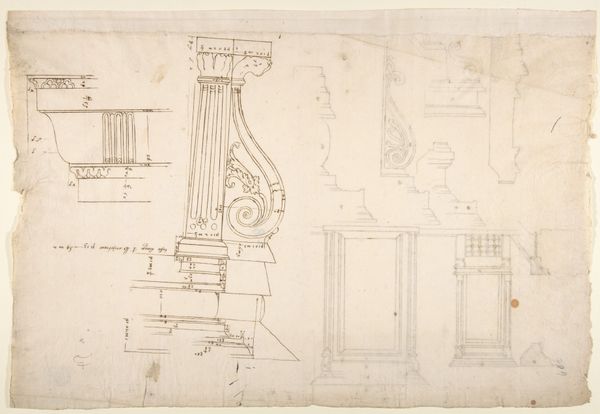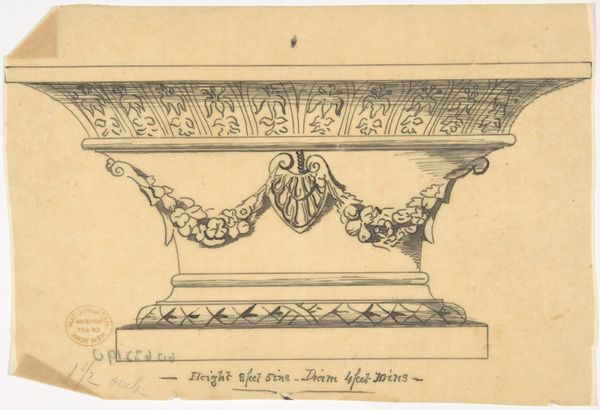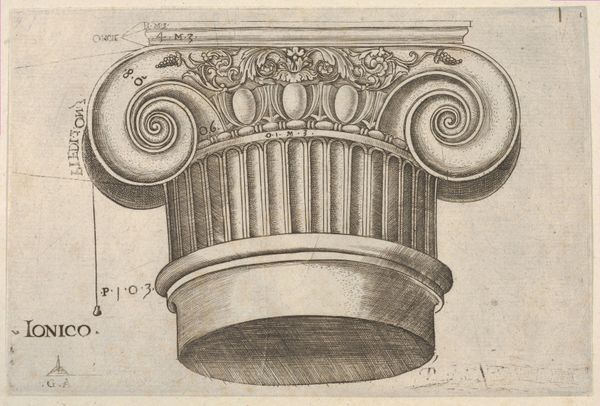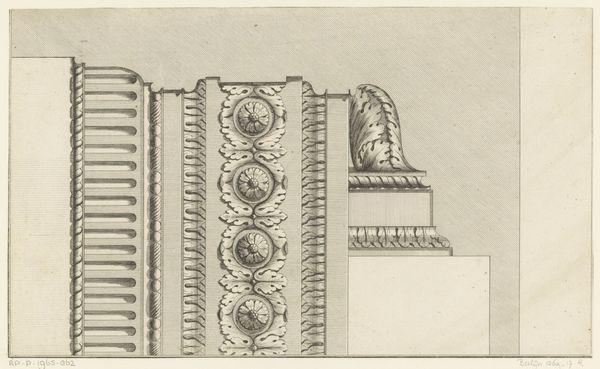
Design for a Metal Footed Vessel (for liturgical use?) 1850 - 1900
0:00
0:00
drawing, print, metal, pencil
#
drawing
# print
#
metal
#
geometric
#
pencil
Dimensions: sheet: 6 13/16 x 10 1/4 in. (17.3 x 26.1 cm)
Copyright: Public Domain
Editor: This drawing, "Design for a Metal Footed Vessel," dates from sometime between 1850 and 1900, and is attributed to an anonymous artist. I’m struck by the implied weight of it. It’s just a drawing, of course, but the detail in the base suggests it would need to be quite substantial. What can you tell me about this kind of design in its historical context? Curator: Well, you’re right to focus on the weight. Remember, metalwork of this period, particularly intended for liturgical use as the title suggests, served not just a functional but also a symbolic purpose. The sheer mass conveyed the wealth and power of the church or patron. Consider how the rise of industrial production in the 19th century influenced artistic design. Does this drawing, in its careful detail, suggest a tension between handcrafted artistry and the emerging potential for mass production? Editor: That’s a good point. I hadn’t considered the impact of industrialization on something like liturgical art. Is the ornamentation typical of designs from this period? Curator: Exactly. The ornamentation becomes a key signifier. These motifs - the geometric patterns and the suggestion of stylized leaves – draw from earlier historical periods, often invoking a sense of tradition and legitimacy. How does the drawing style itself - the precision, the almost technical rendering - contribute to that sense of authority? Editor: I see what you mean. The sharp lines and attention to detail lend it a sense of…officialdom, almost. So, this isn't just about aesthetic beauty, but also about reinforcing social and religious hierarchies through visual language. Curator: Precisely! And the vessel, if it were actually constructed, would occupy a public space, further amplifying its message. Reflect on how such designs contribute to a wider discourse about power, faith, and social order within the visual culture of the time. Editor: Wow, I never thought a simple drawing could be so deeply embedded in cultural power dynamics! Thanks for shedding light on all of that! Curator: It highlights the role of art as more than just decoration; it’s a reflection and reinforcement of social structures. Every line tells a story.
Comments
No comments
Be the first to comment and join the conversation on the ultimate creative platform.
